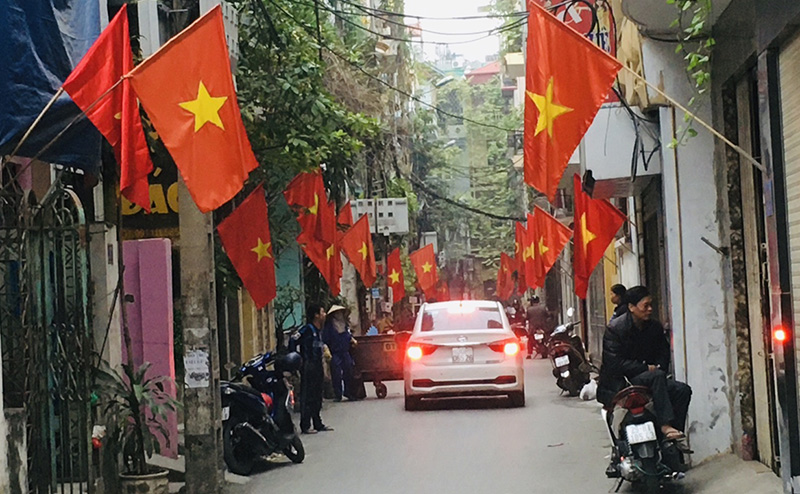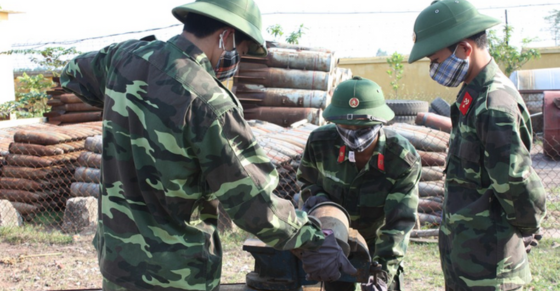Latest Rules on organization and operation of villages, residential groups in Vietnam
What are the latest rules on organization and operation of villages, residential groups in Vietnam? - Nhat Hoang (Phu Yen)

Latest Rules on organization and operation of villages, residential groups in Vietnam (Internet image)
Regarding this issue, LawNet would like to answer as follows:
1. Latest Rules on organization and operation of villages, residential groups in Vietnam
According to Article 3 of Circular 04/2012/TT-BNV (amended in Circular 14/2018/TT-BNV) regulating the principles of organization and operation of villages and residential groups as follows:
- Ensure the self-governance of the residential community, complying with the direct state management of the commune-level government and the leadership of the party committee.
- Comply with the law and follow local conventions (conventions); ensure democracy, openness and transparency.
- Do not separate villages and residential groups that are operating stably; merge villages and residential groups in accordance with the conditions and characteristics of each locality.
- In cases due to site clearance planning or population expansion planning, due to migration in mountainous, highland, remote, or remote areas or areas with complex divided terrain, large areas, and difficult transportation, the conditions for establishing a new village or residential group may be lower than prescribed. In the event that the newly formed residential community does not meet the conditions to establish a new village or residential group, it will be merged into the adjacent village or residential group.
2. Operation of villages and residential groups in Vietnam
Article 5 of Circular 04/2012/TT-BNV (amended in Circular 14/2018/TT-BNV) regulates the current operation of villages and residential groups as follows:
- Communities in villages and residential groups discuss and decide on policies and contribution levels for building infrastructure and public welfare works within the commune, village, and residential groups with the people contributing all or part of the funding and self-management within the community in accordance with the provisions of law.
- The residential community participates in discussion and voting for competent authorities to decide; Provide opinions before competent authorities decide on the affairs of villages, residential groups and communes according to the provisions of the Ordinance on Implementing Democracy in Communes, Wards and Towns.
- Develop and implement village rules and regulations for villages and residential groups; participate in self-management in maintaining security, order, social safety, and environmental sanitation; preserve and promote good cultural traditions in the locality; and prevent and combat social evils.
- Implement the Party's guidelines and policies and the State's policies and laws; participate in and respond to movements and campaigns launched by the Party, State, Fatherland Front and socio-political organizations.
- Election, dismissal, and dismissal of village heads and residential group leaders
3. Requirements for establishment of new villages or residential groups in Vietnam
Specifically, Article 7 of Circular 04/2012/TT-BNV (amended in Circular 14/2018/TT-BNV) stipulates that the requirements for establishment of new villages or residential groups in Vietnam are as follows:
(i) In cases where due to difficulties in the management of the commune-level government, the organization of activities of the village or residential group requires the establishment of a new village or residential group, the establishment of a new village or new residential group must meet the following conditions:
(i.1) Size of households:
- For villages in communes:
+ Villages in communes in the Northern midland and mountainous provinces have 150 households or more;
+ Villages in communes in the Red River Delta provinces have 300 households or more;
+ Villages in communes in the Central provinces with 250 households or more;
+ Villages in communes in the Southern provinces with 350 households or more;
+ Villages in communes in the Central Highlands provinces have 200 households or more;
+ Villages in border communes and island communes; Villages in island districts do not have commune-level administrative units with 100 households or more;
- For residential groups in wards and towns:
+ Residential groups in wards and towns in the Northern midland and mountainous provinces have 200 households or more;
+ Residential groups in wards and towns in the Red River Delta provinces have 350 households or more. Hanoi city alone has 450 households or more;
+ Residential groups in wards and towns in the Central Provinces have 300 households or more;
+ Residential groups in wards and towns in the Southern provinces have 400 households or more. Ho Chi Minh City alone has 450 households or more;
+ Residential groups in wards and towns in the Central Highlands provinces have 250 households or more;
+ Residential groups in wards, border towns, island wards, and towns; Residential groups in island districts are not organized into commune-level administrative units with 150 households or more.
(i.2) Other conditions:
It is necessary to have essential socio-economic infrastructure suitable to the actual local conditions to serve community activities and ensure the stability of people's lives.
(ii) For special cases
- Villages and residential groups are included in site clearance planning and population expansion planning; villages formed by migration in mountainous, highland, remote, and remote areas; villages located in complexly divided terrain; isolated villages on islands; villages on islands and dunes on the river; In a village with a large area and difficult transportation, the village must have 50 households or more; Residential groups have 100 households or more.
- In cases in border areas or islands far from the mainland, due to migration or to protect borders and sovereignty over islands and islands, the establishment of villages and residential groups does not apply to the regulations on household size mentioned in Clause (i).
- Villages and residential groups that have been formed for a long time due to encroachment and invasion, requiring management transfer between commune-level administrative units to facilitate the activities of the community without changing the commune-level administrative boundaries, shall dissolve and establish new villages and residential groups according to regulations.
In case the scale of the number of households is not met, residential clustering shall be carried out according to the provisions of Article 9 of Circular 04/2012/TT-BNV.
Nguyen Ngoc Que Anh
- Key word:
- residential groups
- in Vietnam
- Cases of land rent exemption and reduction under the latest regulations in Vietnam
- Economic infrastructure and social infrastructure system in Thu Duc City, Ho Chi Minh City
- Regulations on ordination with foreign elements in religious organizations in Vietnam
- Increase land compensation prices in Vietnam from January 1, 2026
- Determination of land compensation levels for damage during land requisition process in Vietnam
- Who is permitted to purchase social housing according to latest regulations in Vietnam?
-

- Emergency response and search and rescue organizations ...
- 10:29, 11/09/2024
-

- Handling of the acceptance results of ministerial ...
- 09:30, 11/09/2024
-

- Guidance on unexploded ordnance investigation ...
- 18:30, 09/09/2024
-

- Sources of the National database on construction ...
- 16:37, 09/09/2024
-

- General regulations on the implementation of administrative ...
- 11:30, 09/09/2024
-

- Notable new policies of Vietnam effective as of ...
- 16:26, 11/04/2025
-
.Medium.png)
- Notable documents of Vietnam in the previous week ...
- 16:21, 11/04/2025
-
.Medium.png)
- Notable documents of Vietnam in the previous week ...
- 16:11, 02/04/2025
-
.Medium.png)
- Notable new policies of Vietnam to be effective ...
- 16:04, 02/04/2025
-
.Medium.png)
- Notable new policies of Vietnam effective from ...
- 14:51, 21/03/2025
 Article table of contents
Article table of contents
